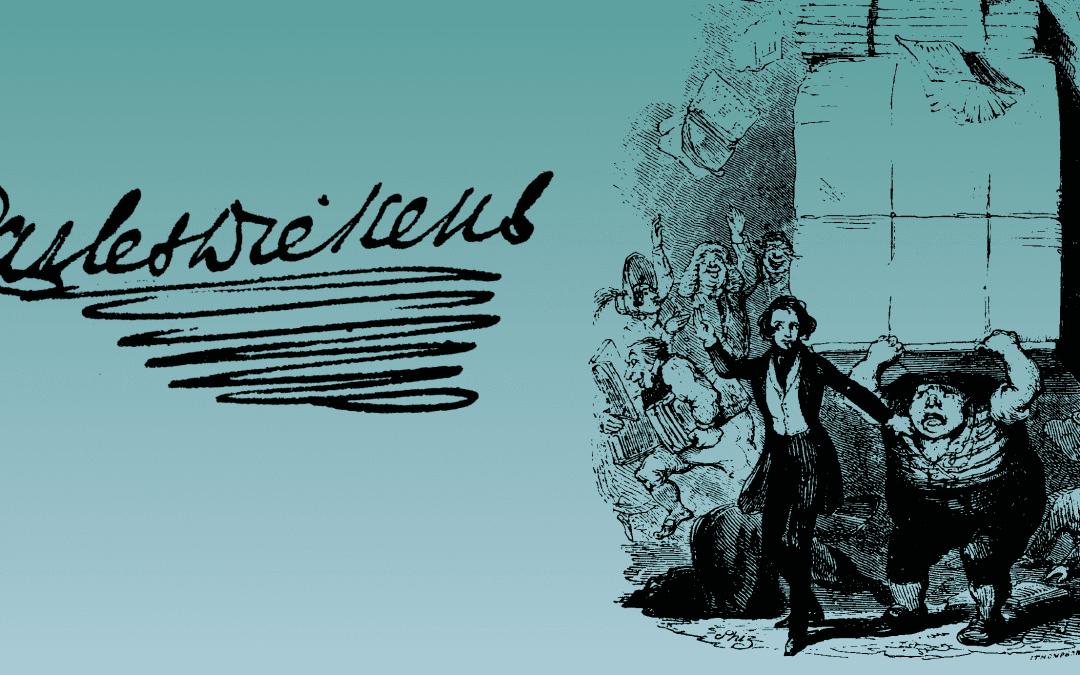
Collecting the Works of Charles Dickens
Charles Dickens is regarded as the greatest English novelist of the nineteenth century and is the most quoted writer in English after Shakespeare. Bursting with vivid characters and settings, Dickens’s novels show his characteristic concern for the most vulnerable in contemporary English society. His flair for painting characters who are indelibly memorable for their idiosyncratic appearance, mannerisms, and catchphrases, but who nevertheless represent unchanging aspects of human nature, is one much aped. It was G. K. Chesterton who remarked on Dickens’ capacity for empathy, saying: “Dickens, being a very human writer, had to be a very human being”. As one of the most collected authors the world over, we revisit the publication history of each of his works, explaining what to look out for in Charles Dickens first editions.
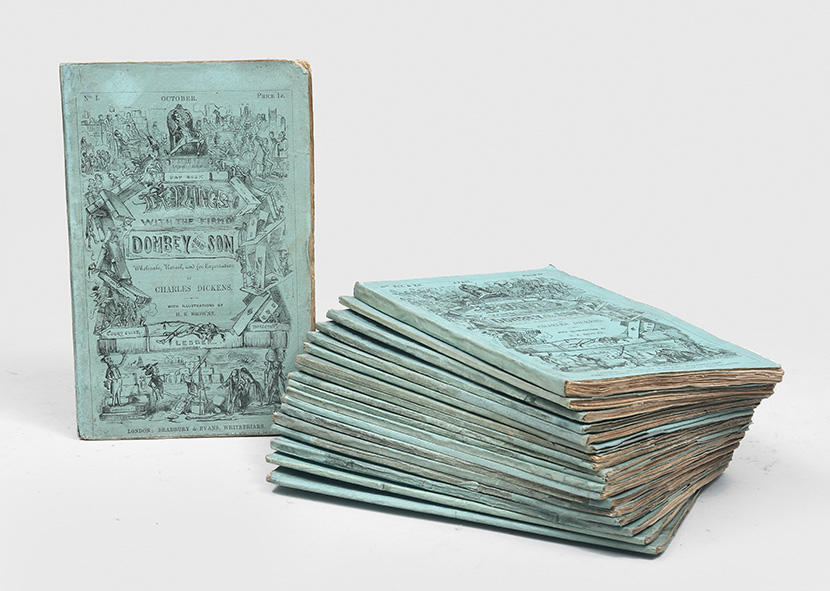
Charles Dickens, Dealings with the Firm of Dombey and Son, First edition, in the original monthly parts published from September 1846 to March 1848.
Charles Dickens First Editions: A Story in Parts
For any collector of Dickens, the thing to bear in mind is that many of his major novels first appeared serialised in monthly parts. These parts issues have traditionally commanded the higher prices than the Charles Dickens first editions in book form. Nine of Dickens’s fifteen novels – The Posthumous Papers of the Pickwick Club (1837), Nicholas Nickleby (1839), Martin Chuzzlewit (1844), Dombey and Son (1848), David Copperfield (1850), Bleak House (1853), Little Dorrit (1857), Our Mutual Friend (1864), and Edwin Drood (1870) – first appeared in this format. The parts issues have many complexities explained in full in A Bibliography of the Periodical Works of Charles Dickens by Thomas Hatton and Arthur H. Cleaver, published in 1933. While the complex information found in ‘Hatton & Cleaver’ can be bewilderingly thorough, the key is to find sets in parts with clean text, the wrappers intact without restoration to their spines, and the plates, which are liable to oxidisation, in fresh condition.
The monthly parts had green or blue illustrated paper wrappers, with engraved plates preceding the text. Inside the wrappers, printed advertisements by companies keen to capitalise on Dickens’ success bulked out the text. Much of the pleasure of collecting Dickens in parts is to see first-hand his work appear in the midst of this noisy marketplace of Victorian merchants and quacks.
Once the parts issue neared its end, the publishers would put out the complete novel as a single volume. More than half of Dickens’s major novels were issued in a large size known as demy (rhymes with “defy”) octavo—at 8 ½ by 5 ½ inches, a little shorter than a typical modern hardback. These were simple case-bindings of purple or green cloth. As Dickens’ novels were of such exuberant length, the sheer weight of his texts meant that these relatively flimsy cases were prone to damage. The publishers also offered various styles of deluxe of leather bindings.
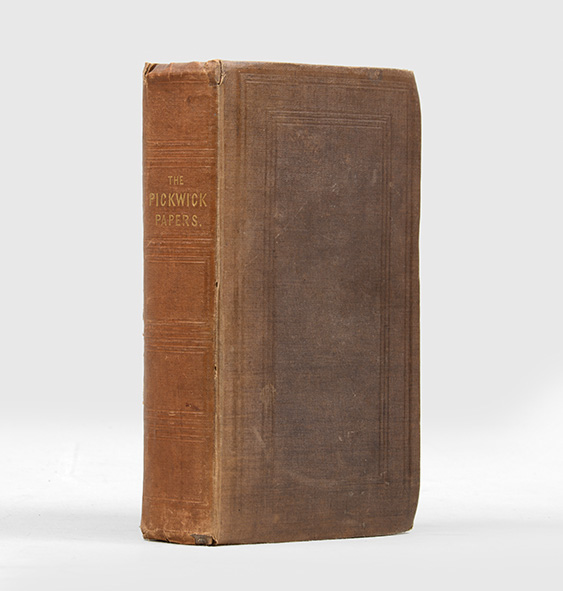
First edition of The Posthumous Papers of the Pickwick Club in demy octavo, bound from the original parts in the publisher’s primary cloth binding (1837).
The Early Works
Charles Dickens began his writing career as a parliamentary reporter, employing his sharp observational skills to report on debates and cover election campaigns. Together with his irrepressible comic gusto, he brought this talent to descriptions of everyday life gathered in his first book, the two-volume Sketches by Boz (1836) – though the primary selling point was its illustrations by the renowned George Cruikshank.
Dickens’s second book was planned as a variation on the illustrated format popularised by Sketches. The publisher had commissioned a monthly serial following the misadventures of a group of cockney sportsmen. In the fourth instalment, Dickens introduced the character of Sam Weller, who proved so popular with readers that the effect on sales was stratospheric. The Posthumous Papers of the Pickwick Club (1837) proved to be a publishing sensation.
Dickens’ second novel, and one of his most enduringly popular, was Oliver Twist (1838), illustrated by Cruikshank. It was serialised first, then published in three volumes for the circulating libraries. Dickens often used Oliver Twist for his popular dramatic readings, which taught him the value of concision and inspired him to edit the novel down somewhat. When he fell out with Bentley and bought back his copyright, he tightened Oliver for a New Edition (1846), issued in ten monthly parts, then in a single demy octavo volume.
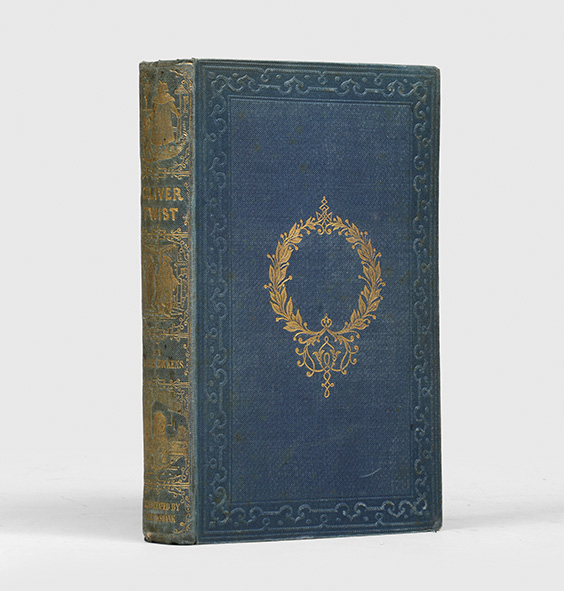
The Adventures of Oliver Twist, first one-volume edition of Dickens’s second novel in original blue cloth (1846).
Bestsellers
Dickens’ most famous single work is A Christmas Carol (1843), both a charged fable about economic injustice and redistribution and a central reference point to the modern notion of Christmas itself; indeed, the name of the protagonist, Scrooge, has become part of our language, shorthand for a miserly and selfish person. A Christmas Carol was the first in a series of five annual Christmas books written by Dickens, each published in a small octavo format for the Christmas gift market. The book itself is notable amongst these, as Dickens was still experimenting with the form. The binding is salmon-pink cloth, with a gilt wreath on the front cover. Dickens, who financed the publication himself, originally wanted the title page in Christmas colours of red and green and the endpapers to be green, but the printed green proved problematic and was abandoned after a short run. The title page was reset in red and blue and the endpapers changed back to the usual machine-coated yellow. Copies in both states were issued together on publication day, so a collector can consider either state acceptable. But the book was quickly reprinted with minor text changes; only the first impression, with ‘Stave I’ at the head of the text, in fine condition carries top market value.
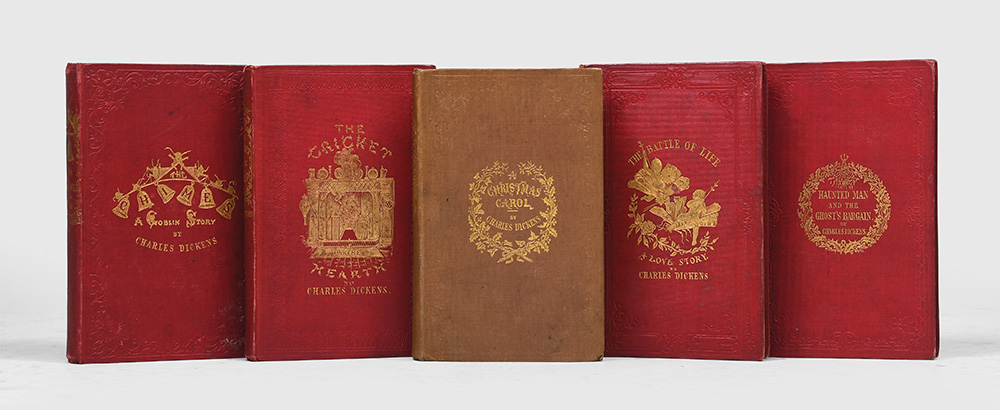
First editions, first printings, of the complete set of Dickens’s Christmas books (1843).
The other Christmas books were issued in standard red book cloth, avoiding the production complexities and expense that plagued A Christmas Carol. A fine set of the Christmas books in cloth, glinting in cinnamon and scarlet by the winter fireside, is a high spot in any Charles Dickens first editions collection.
Master Humphrey’s Clock was first issued in weekly rather than monthly parts and contained The Old Curiosity Shop (1840) and Barnaby Rudge within its narrative frame. These were later published as separate books. Both are in imperial octavo, taller than the usual demy octavo. At the other end of the scale, Hard Times (1854) first appeared in Dickens’s weekly periodical, Household Words. It was priced lower than Dickens’s other novels and issued in small octavo format without illustrations.
A Tale of Two Cities (1859), Dickens’s best-selling novel, was first published weekly in his own periodical, All the Year Round. Dickens later republished the story as eight monthly parts. The single demy octavo volume was first issued in red cloth.
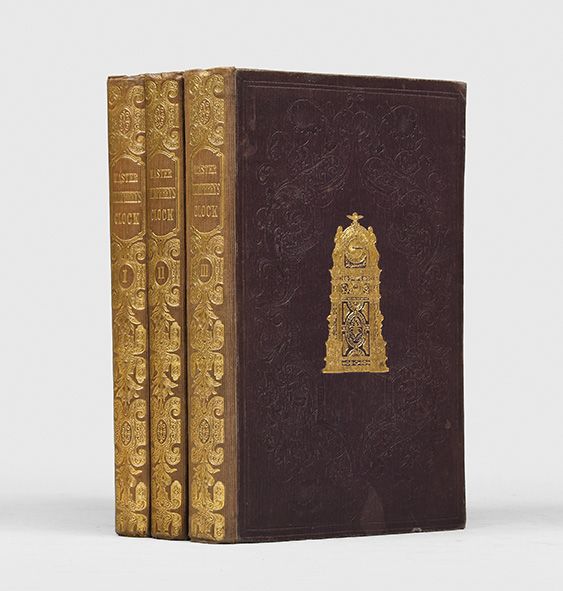
First edition of Master Humphrey’s Clock in tall octavo (1840).
Although many of his novels were illustrated, perhaps his greatest work, Great Expectations (1861), was published without illustration. The most attractive of his novels in book form, it appeared in three volumes to meet the requirements of the circulating libraries (as Oliver Twist had), but handsomely dressed in eye-catching violet wavy-grain cloth, with High Victorian gilt decoration around the spine titles. Expecting huge demand, the publishers printed five impressions before publication. The majority of the first impression and more than half of the second—1,400 copies in all—went to Mudie’s Select Library, where they were read to death by eager customers, leaving them damaged or destroyed. A first impression of Great Expectations in fine original cloth is thus highly sought-after and can fetch high prices. The last outstanding example to come to market sold at Sotheby’s in 2019 for £175,000.
Charles Dickens First Editions: Other Works
Before he had perfected the sketch-writer’s art, Dickens dreamed of a theatrical career. In branching out from his most famous works, his theatrical preoccupation becomes more apparent, whether in the memoirs of the great clown Joey Grimaldi (1838) he ghost-wrote for Bentley, or his own original melodramas, like The Frozen Deep (1856, publ. 1866), co-written and performed with his friend Wilkie Collins.
In later years he expended a considerable portion of his energies on dramatic readings, carefully editing his original texts into readable segments. He had some of these privately printed in small numbers. Necessarily rare, those few copies that have come to market in recent years have fetched high prices.
Dickens’s showmanship found expression in his self-presentation. The frontispiece of his third novel, Nicholas Nickleby, displayed, instead of the more usual illustrated scene from the book, a handsome engraved portrait of the newly wealthy young author. Below the plate was a printed facsimile of the famous Dickens signature, festooned with a swag of repeated underlines, the mark of his theatrical sensibilities.
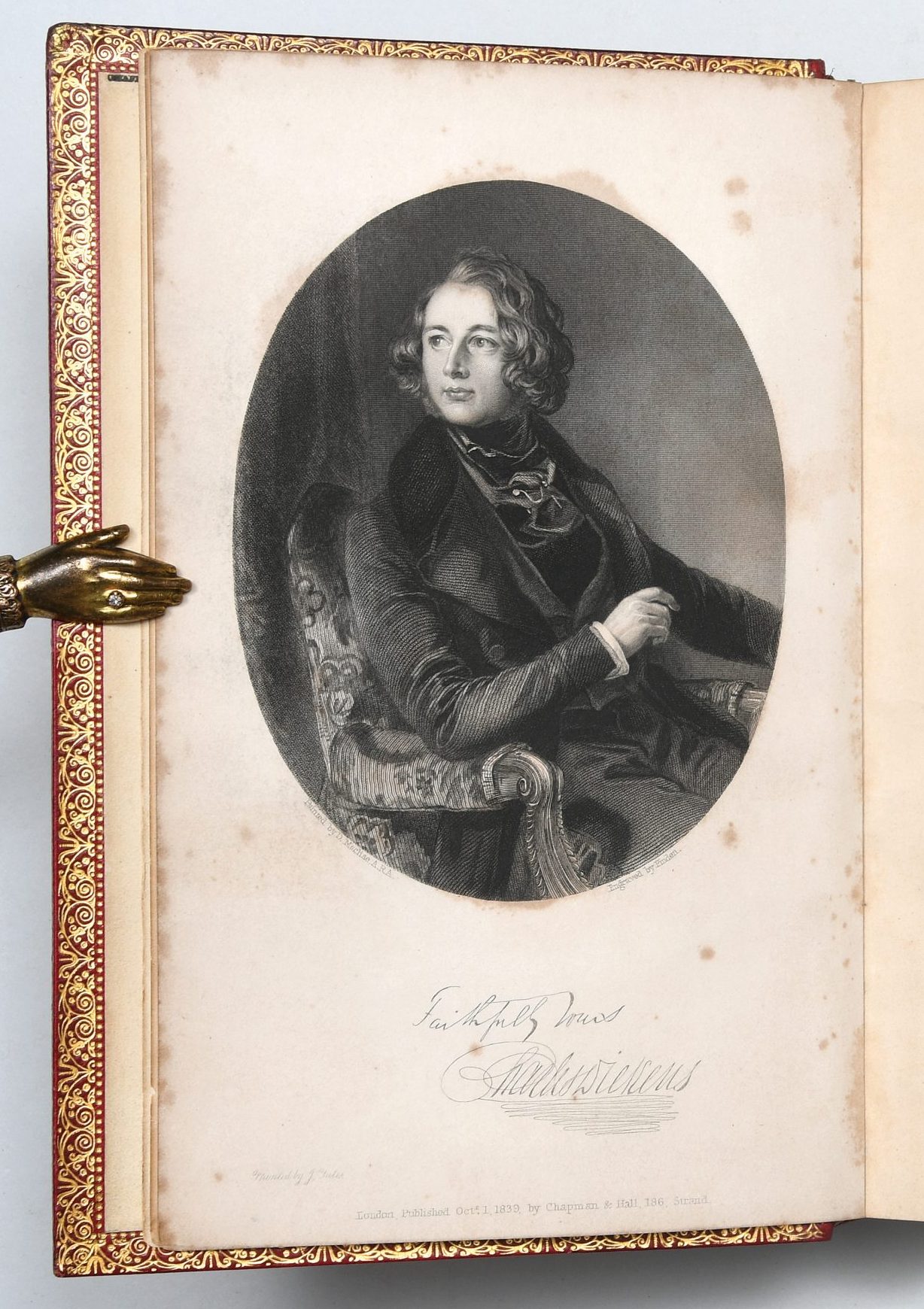
That ostentatious signature is present even on the briefest of letters he dashed off – and like many Victorian authors, Dickens was a prodigious writer of letters. His autograph letters, especially those which relate to his major novels, are keenly sought, with prices ranging from a few hundred pounds for everyday notes to tens of thousands for longer letters of major significance.
If you are interested in starting a Dickens collection and would like further guidance from one of our experts, or help with sourcing your first book, please don’t hesitate to get in touch.

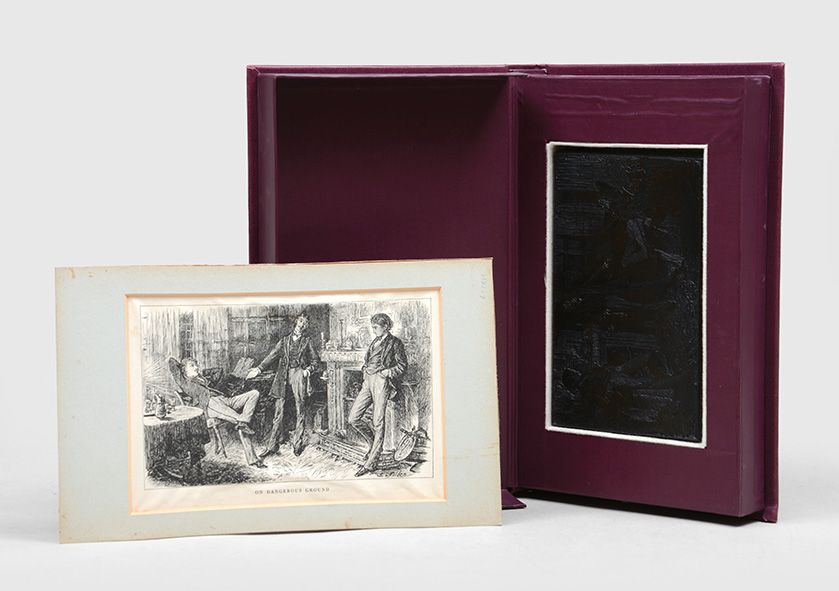
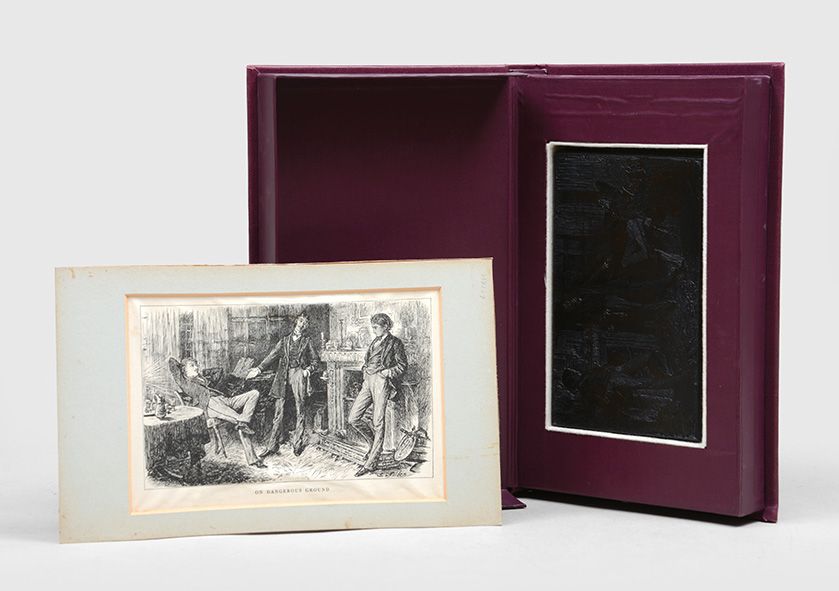
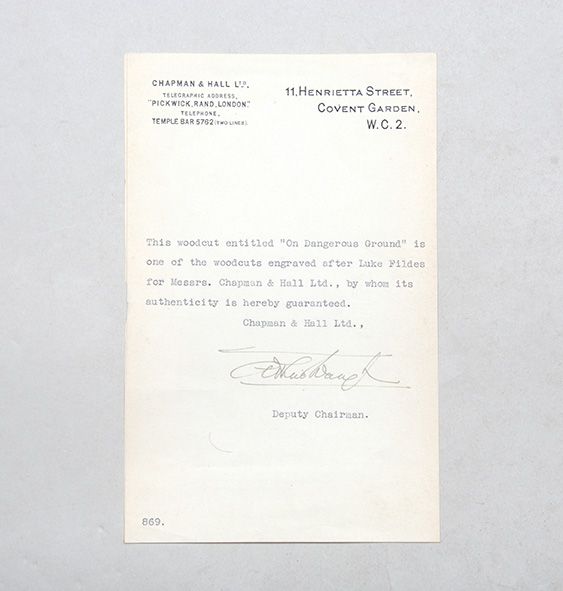
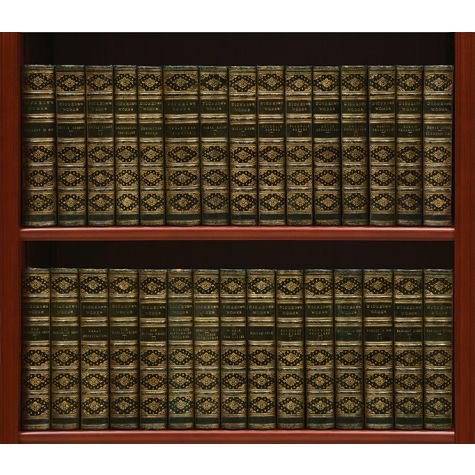
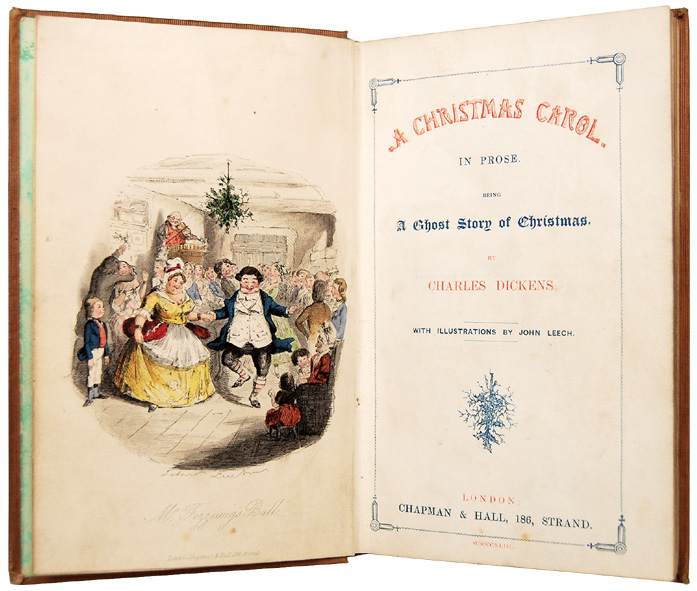
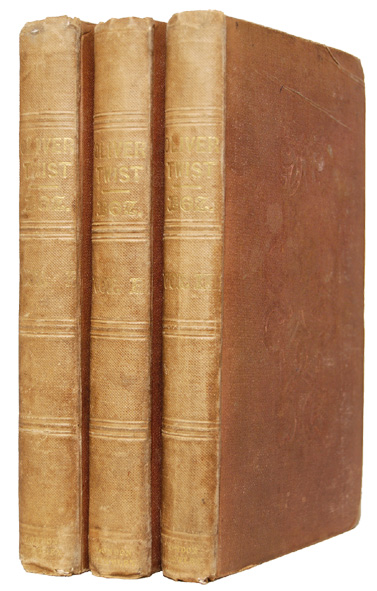
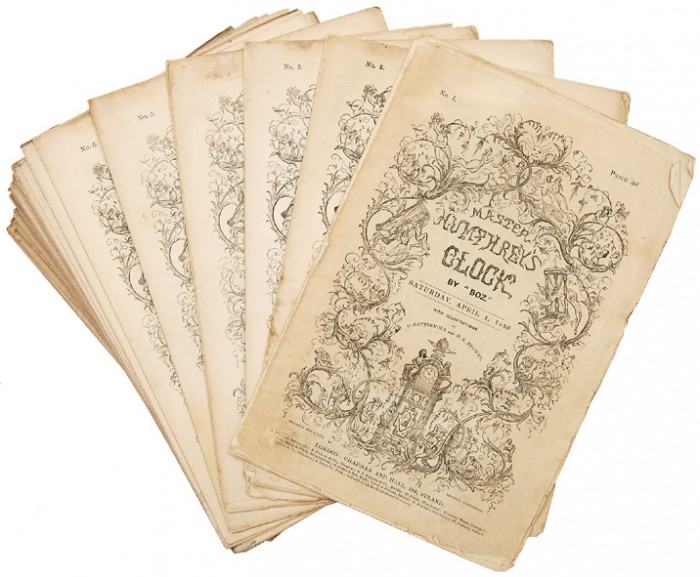
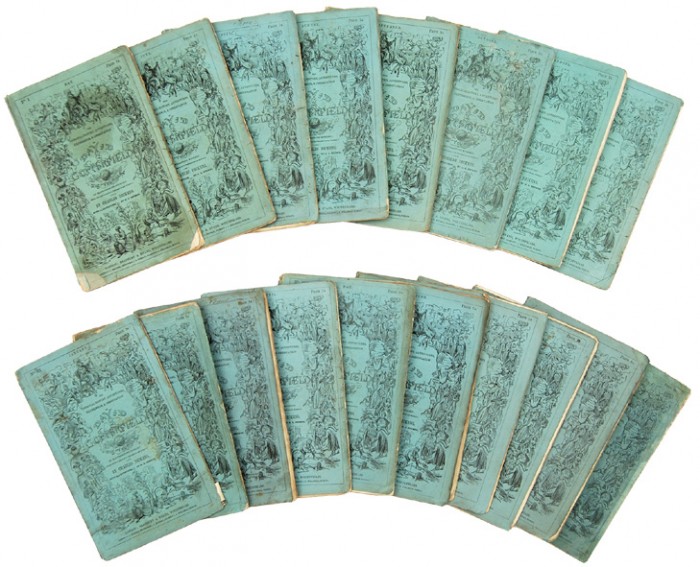
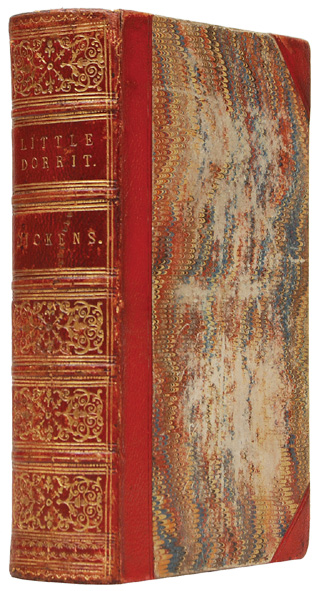
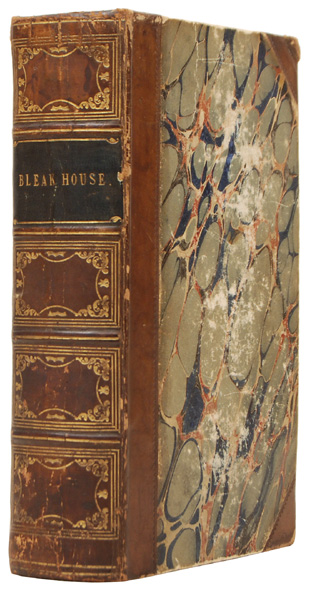
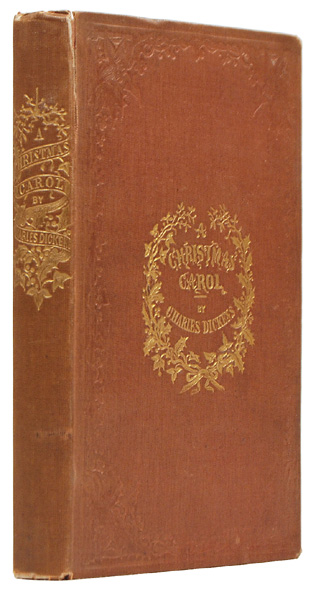
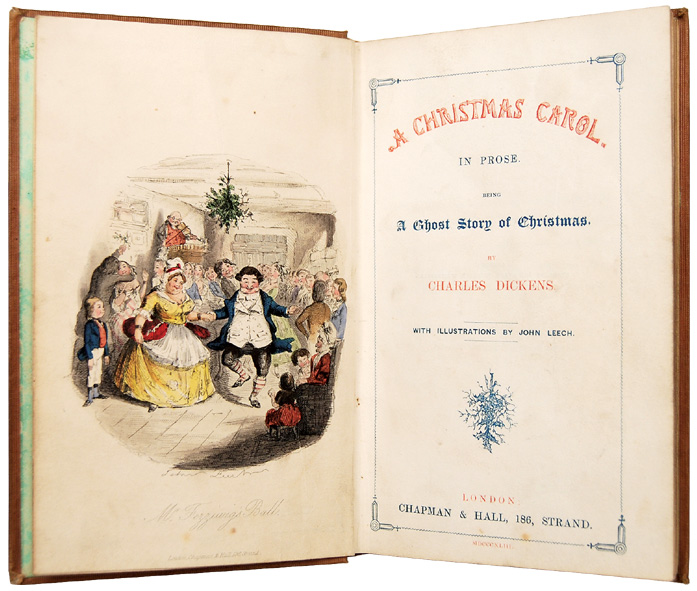
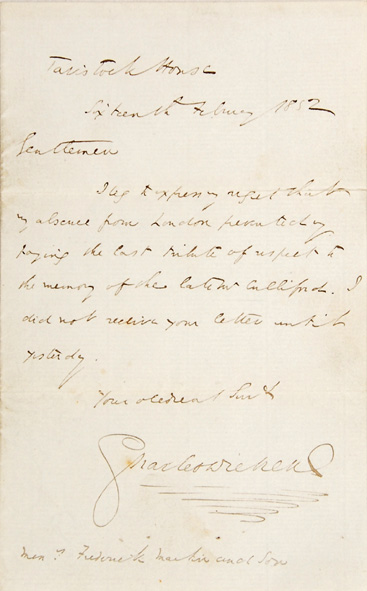
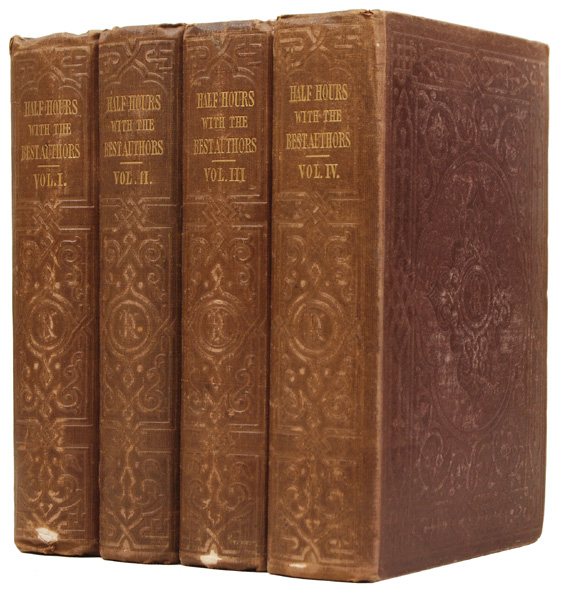
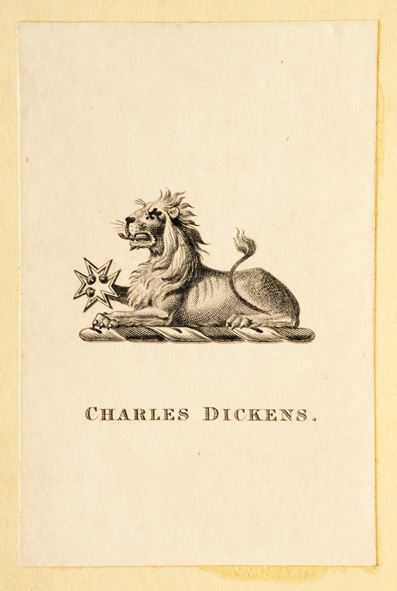
Recent Comments